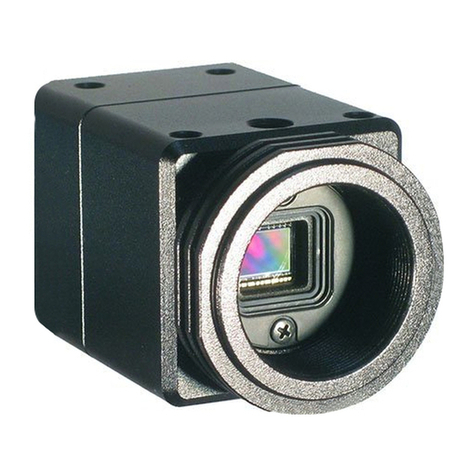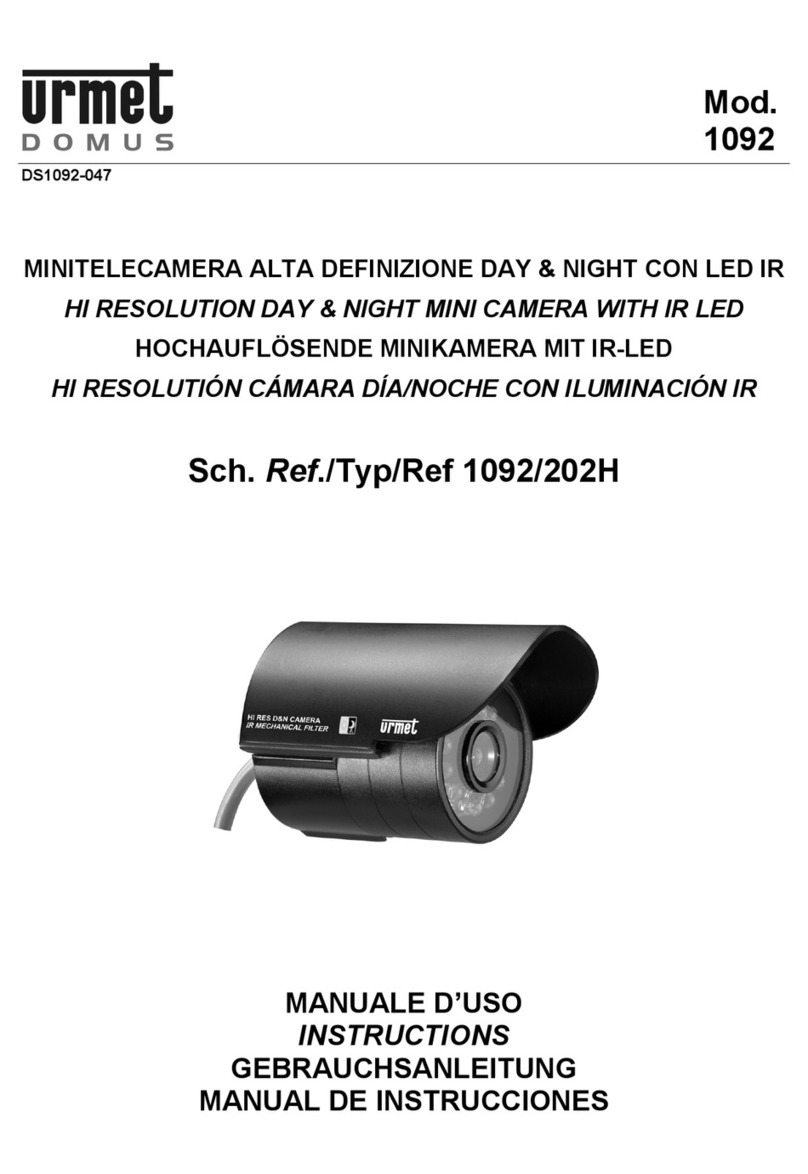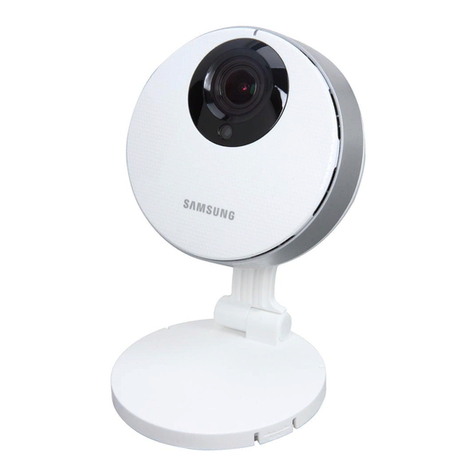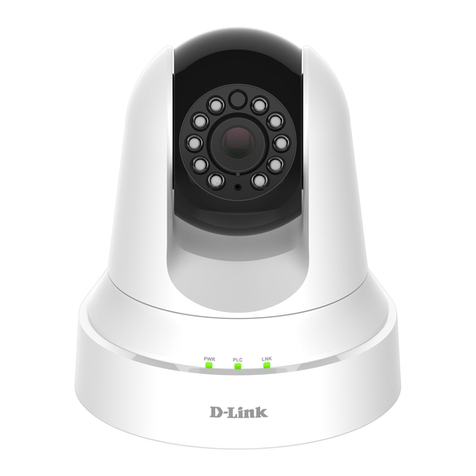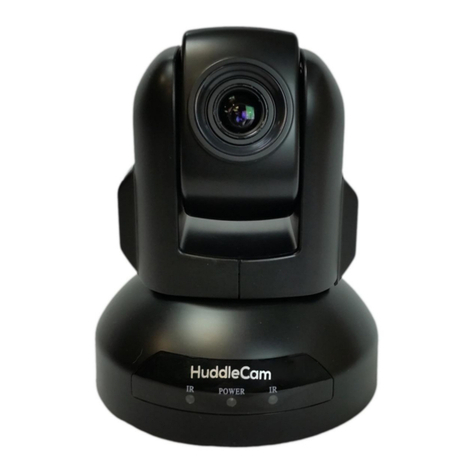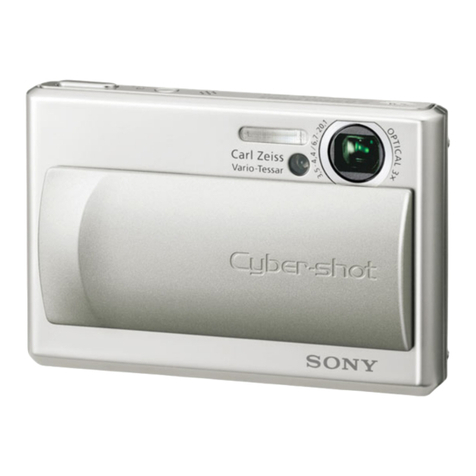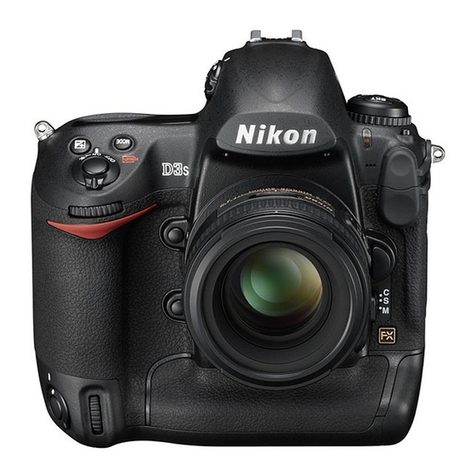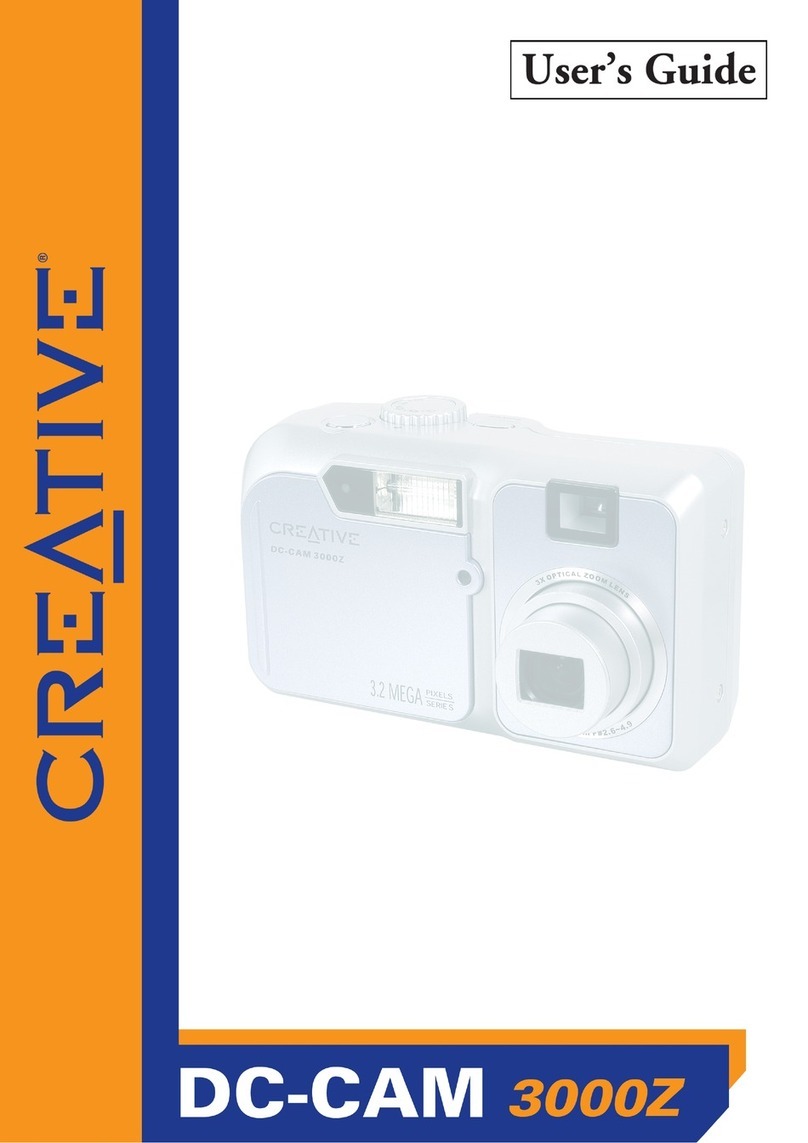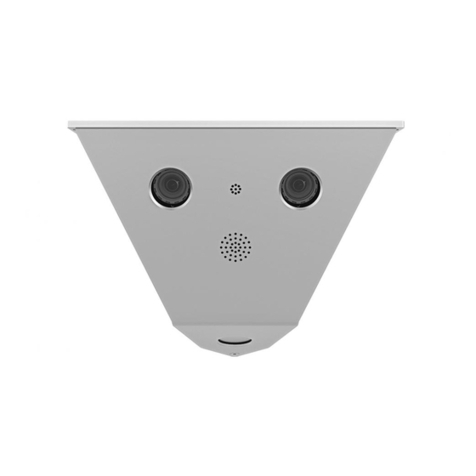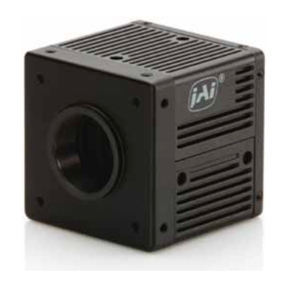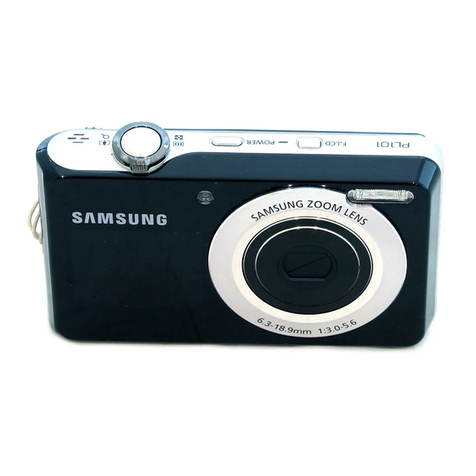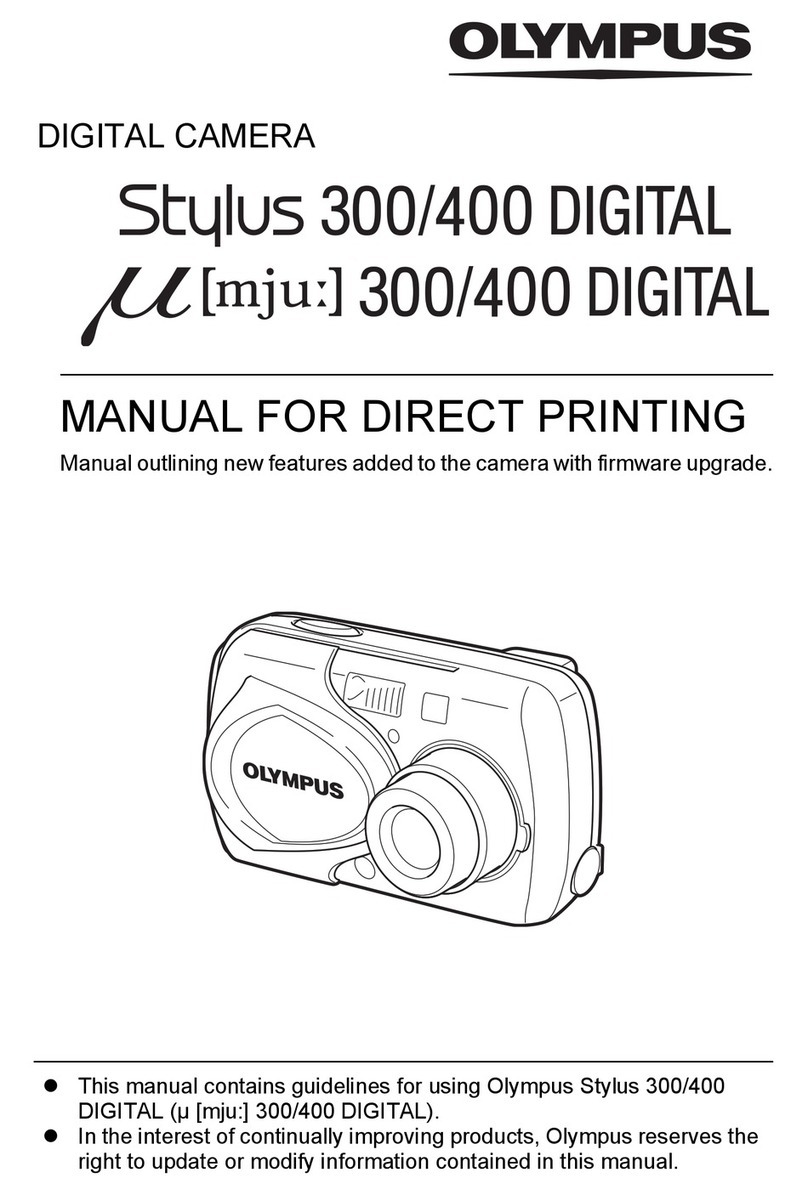Troglotech T812 Instruction manual

Troglotech T812 Pan & Tilt Camera Workshop Manual Page 1
WORKSHOP MANUAL — T812 Pan & Tilt Camera
Troglotech Ltd Phone +44( )173 71124
Unit 1, 3 Penns Road Phone +44( )173 71124
Petersfield Fax +44 ( )173 71124
Hampshire Email info@troglotech.com
GU32 2EW Web www.troglotech.com

Troglotech T812 Pan & Tilt Camera Workshop Manual Page 2
T812 CAMERA - OVERVIEW
T812 Pan and Tilt Camera
The T812 camera is designed for simple maintenance and fault finding, each PCB
and section has a distinct function which can operate independently. For instance,
the Rod Adaptor, when connected to a supply, will provide 5V, 15.6V and IIC
messages even if not connected to the Camera Head. If the Pan mechanism is
removed from the Camera Head, the camera will still level the Rotate assembly.
The Camera Head can be swapped between Rod Adaptors without the need for
re-calibration—the calibration data is stored on the Rotate PCB (812/ 4).
Start-up Routine
When the camera is connected to a system or a bench supply and power is
applied it will go through a start-up routine:
Once the processor (812/22) receives power from the power supply PCB (812/21)
it will wait for 2 seconds and then command the Counter-Rotate and Pan motors to
operate. As the Pan mechanism has a large seal which can provide a lot of friction
when the head is cold, the pan motor is provided with a ramping current and the
pan position is continually sampled to see if the mechanism is turning. The current
is increased until the Pan mechanism starts turning—if it fails to turn after 15
seconds the motor direction is reversed momentarily to break the seal friction.
Once the Pan mechanism is turning, the speed is adjusted (by altering the current
to the pan motor via PWM control) until the Pan mechanism realises a linear
speed of 36 degrees per 13 seconds.
During this period, the processor will continually monitor the Pan and Counter
Rotate sensors until each sensor detects a large value change. At this point the
processor saves the maximum and minimum values. The processor commands
the Pan and Counter Rotate motors to stop once these values are stored and the
Pan Speed is within limits. If either motor keeps running this usually indicates the
lack of the respective sensor signal. Once completed the camera will start the
‘centralise’ routine where the Counter-Rotate, Pan, and Rotate mechanisms will
servo to a straight-ahead and upright position.
Once centred, the T812 will accept data commands from the T8 4 and will start
transmitting data - both data streams are sent and received via signals multiplexed
on the Video+ve conductor. The T8 4 does not need to receive data from the
T812 to send out commands - and the T812 does not need to receive data to
transmit data back. Currently, the data from the T812 is not used by the T8 4.
More information on the data can be found in the “TTDS - Troglotech Data
System.pdf” document.

Troglotech T812 Pan & Tilt Camera Workshop Manual Page 3
T812 CAMERA - OVERVIEW
Working on the T812
The T812 camera can be disassembled easily using standard tools. The only
special tool needed is the T812 C spanner which is used to separate the rod
adaptor from the camera head.
Tools
In addition to the Allen key set, tweezers and screwdrivers, a pair of long-nosed
pliers is needed for disassembly of the rod adaptor. If the counter rotate motor
needs to be replaced, a soldering iron will be required, all other assemblies and
PCB’s use connector pairs.
Fault Finding Tools
An oscilloscope is useful, but not mandatory for tracing problems. It is useful for
checking that the IIC Bus is operational, but most faults have obvious causes
(such as when a motor stops operating) and most electrical tests can be
performed using a standard digital multimeter.

Troglotech T812 Pan & Tilt Camera Workshop Manual Page 4
T812 ROD ADAPTOR BLOCK DIAGRAM

Troglotech T812 Pan & Tilt Camera Workshop Manual Page 5
T812 ROD ADAPTOR
T812 Rod Adaptor
The Rod Adaptor comprises two active PCB’s, the processor (812/22) and the
power supply (812/21). The two are interconnected by the 812/23 pogo PCB
which is also the interface to the camera head. The rear pogo PCB connects to
the T8 4 termination and power is routed through the processor, via the 812/23
PCB to the power supply PCB. The power supply takes the 24V from the T8 4
and converts it to 5V and 15.6V by two switched-mode supplies.
The processor PCB is the master controller for all functions. It also contains a
video buffer and the data transceiver. There are two top-surface connectors, the 5-
way is used for programming, the 3-way can be used to connect to the camera
test jig and has Camera+ve, Camera-ve and Video+ve available in that order.

Troglotech T812 Pan & Tilt Camera Workshop Manual Page 6
T812 ROD ADAPTOR
The picture to the right shows the connections
through to the camera head. The Rod Adaptor
can be connected to the camera test jig or a
T8 4 system and switched ON to check the
basic functions of the assembly. Video will not
be present, but the voltages and the basic IIC
bus signals can be checked (these will be ~3V
in amplitude).
The loss of any of these voltages or signals
would indicate that the Rod Adaptor is faulty.
This assembly should demand around 3 mA
@ 24V when not connected to the camera
head.
T812 ROD ADAPTOR - DISASSEMBLY
1). Hold the Rod Adaptor in your left
hand and give the end of the spanner a
sharp blow. This will loosen the
threaded boss, the Rod Adaptor can
now be unscrewed from the Camera
Head.
2). Remove two Pozi-drive screws as
shown to the right.

Troglotech T812 Pan & Tilt Camera Workshop Manual Page 7
T812 CAMERA ROD ADAPTOR
3). Remove the 2.5 x 3 grub screw 4). Fit a pair of long-nose pliers to the
two vacant screw-holes and unscrew
the adaptor body
5). Remove the two remaining screws,
the collar can now be removed 6). Remove the pogo PCB by levering
at the screws with a flat screwdriver
7). Remove all eight securing screws 8). Disconnect from rear pogo PCB

Troglotech T812 Pan & Tilt Camera Workshop Manual Page 8
T812 CAMERA HEAD
T812 Camera Head
The camera head consists of two major
sub-assemblies, the pan assembly and
the rotate assembly. The rotate assembly
contains a single active PCB which con-
tains a slave processor, EEPROM, incli-
nometer and motor driver for the rotate
motor.
The slave processor is employed to com-
municate with the inclinometer and motor
driver. All commands and data to/from the
processor PCB is sent and received via
the IIC bus.
The pan mechanism contains five active
PCB’s which also form the interconnec-
tions through to the final active PCB, the
camera sensor. In order, these are:
Pan sensor PCB (812/11), this measures
the pan position and contains two ADC’s
Pan motor PCB (812/1 ), this contains
the pan motor driver and an IIC port
Counter rotate PCB (812/ 8), this con-
tains the LED driver, motor driver and liq-
uid lens driver
Counter rotate sensor PCB (812/14), this contains the counter rotate sensor, 3V
regulator (for the sensor PCB) and a video buffer
Camera sensor PCB (812/15), this contains the video sensor and circuitry to drive
it. It only requires an input of 3V to produce a full composite video output
On the lower part of the pan assembly is a slipring (812/12) used to pass signals
through from the rotate assembly. There is a separate LED PCB that is passive, it
only contains two 5W LED’s

Troglotech T812 Pan & Tilt Camera Workshop Manual Page 9
T812 CAMERA HEAD - PAN DISASSEMBLY
1). Remove both 2.5 x 3 grub screws 2). Remove 3 x Pozi screws to remove
the buffer and unlock the mechanism
3). Remove one of the Allen bolts from
the pan cover and drop a 2mm Allen
key into the vacant hole. Turn the pan
mechanism slowly clockwise until the
Allen key drops into an indent in the
locking collar. Use slight force to rotate
the pan assembly further clockwise by
a further 4 degrees until the pan as-
sembly stops turning. This will unlock
the collar from the rotate assembly.
4). Carefully lever the pan assembly
from the rotate assembly as shown
above. Ensure that neither assembly is
marked. The pressure needed to re-
move the assembly is only required to
overcome to stiction of a single o-ring. If
more pressure is required move the
collar more by using the above process
in both directions to release the bayo-
net fitting.

Troglotech T812 Pan & Tilt Camera Workshop Manual Page 1
T812 CAMERA HEAD - PAN DISASSEMBLY
5). Carefully remove the fibre seal 6). Remove 3 x Allen bolts
7). Remove 2 x Pozi screws 8). Carefully lever the pan assembly
apart at this interface

Troglotech T812 Pan & Tilt Camera Workshop Manual Page 11
T812 CAMERA HEAD - PAN DISASSEMBLY
9). Remove o-ring
1 ). Remove 2 x Allen bolts 2-turns at a
time to allow the assembly to be re-
moved
1 ). Cont. 1 ). Cont.
11). Remove 2 x Allen bolts to remove
LED PCB
11). Cont...

Troglotech T812 Pan & Tilt Camera Workshop Manual Page 12
T812 CAMERA HEAD - PAN DISASSEMBLY
12). Remove 4 x slotted screws 13). The 812/14 counter rotate sensor
14). Remove 4 x slotted screws 15). Remove cover and motor
16). Remove 4 x slotted screws to re-
move 812/ 8 PCB
17). The liquid lens can be accessed
by removing 4 x slotted screws on the
brass ring. The sensor PCB can be
accessed by removing 4 x slotted
screws on the plastic ring

Troglotech T812 Pan & Tilt Camera Workshop Manual Page 13
T812 CAMERA HEAD - PAN REASSEMBLY
1). If the counter-rotate motor has
been replaced, the wiring is soldered
to the PCB as shown here, with the
RED wire closest to the motor
The motor must be fitted before the
812/14 counter rotate sensor PCB is
refitted
3). When refitting the counter rotate
assembly into the pan cover, turn each
of the screws only 2 turns at a time,
otherwise the PCB can be damaged or
the assembly may cant stopping the
insertion
2). When refitting the counter rotate
sensor PCB, ensure the motor shaft
goes through the brass bearing
4). If the 812/ 8 counter rotate PCB
needs to be replaced, ensure the lens
brushes are not bent. Straighten the
brushes if they are bent in any way
once the PCB has been secured to the
assembly. Ensure the brushes do not
protrude from the rear of the PCB and
trim to .3mm if required.

Troglotech T812 Pan & Tilt Camera Workshop Manual Page 14
T812 CAMERA HEAD - PAN REASSEMBLY
5). If the sensor PCB has been re-
moved, ensure cleanliness before re-
assembly. If the liquid lens has been
removed, the four long screws c/w
springs must screwed fully in and then
unscrewed by 1/2 turn
7). Before reassembling the pan assembly into the rotate assembly, lubricate the
large o-ring with silicone grease (this often remains in the bowl of the rotate assem-
bly during disassembly). The fibre washer is fragile, hold the fibre washer to the pan
assembly with a small amount of silicone grease and ensure it is neatly arranged on
the assembly. The fibre seal must be fitted to the pan assembly and not the rotate
assembly as the seal will be torn by the bayonet lugs.
6). When the pan assembly is sepa-
rated, the o-ring usually stays with the
upper section. This o-ring must be fitted
to the raised boss on the lower half
(shown here). Lubricate the o-ring be-
fore reassembly

Troglotech T812 Pan & Tilt Camera Workshop Manual Page 15
T812 CAMERA HEAD - ROTATE DISASSEMBLY
1). Remove 3 x 3mm grub screws. 2). Unscrew the large securing collar
3). Pull the rotate clutch from the ro-
tate assembly
4). Remove the two outer Pozi screws
on the brass motor block
5). Lift the motor block upwards slightly
and outwards.
6). Remove the two upper Pozi screws

Troglotech T812 Pan & Tilt Camera Workshop Manual Page 16
T812 CAMERA HEAD - ROTATE DISASSEMBLY
7). Remove the 812/ 4 PCB by insert-
ing a pair of tweezers in the top, left
corner of the motor aperture and pull-
ing apart the connector pair
8). When re-assembling, do not apply
any pressure on the right-angled con-
nector. To achieve this, brace the con-
nector with a pair of tweezers as shown
here (PCB not shown for clarity). Ex-
cessive pressure on the right-angled
connector will fracture the joints
9). The pan pogo PCB (812/ 5) is secured by 3 x Pozi panhead screws. Re-
move these and manipulate the PCB past the magnet housing. This can only
be removed when the 812/ 4 rotate PCB is not present

Troglotech T812 Pan & Tilt Camera Workshop Manual Page 17
T812 CAMERA - FAULT FINDING
T812 Camera Head Block Diagram

Troglotech T812 Pan & Tilt Camera Workshop Manual Page 18
T812 CAMERA - FAULT FINDING
Fault Finding
The T812 mechanical design is extremely robust with large, sealed bearings and
machined-from-solid Stainless Steel housings. To complement the mechanical
design, the electronics have protection for the IIC Bus on each PCB and the
introduction of a new video output buffer that is proof against shorts to 24V and
V. However, in our industry, even the most robust cameras can fail and a logical
approach to fault-finding will solve most problems quickly and easily. Knowing that
the start-up routine exercises the major assemblies allows a quick assessment.
Below is a short list of faults and the fault-finding approach for each:
Loss o Video
Remove rod adaptor, check for correct voltages at pogo’s, if OK, remove adaptor
body and refit to camera head, switch ON and check for video at the junction of
R31, R4 and R43 - loss of video here indicates that the fault is in the camera
head. If video is present here, the fault is with the 812/22 PCB. If the video is
missing from the head, operate the camera with the pan cover removed and check
for video at the pogo’s on the back of 812/14. If video is found here, suspect the
812/14 PCB or one of the 1 -way connector pairs. If no video is found on the
pogo’s and the 3V supply is present, the fault will be on the 812/15 PCB.
Loss o Counter Rotate
If the pan motor runs correctly, suspect the counter rotate motor itself or the
812/ 8 PCB. If the pan motor does not run but the rotate motor does, suspect the
1 -way connector pair between the 812/ 4 rotate PCB and the 812/ 5 pan pogo
PCB. If none of the motors run, suspect a short to V or a short between SDA and
SCL on the IIC Bus. The IIC Bus can be checked with an oscilloscope at pins 1
and 2 on IC28 on 812/22 while the camera is operating, or with a DVM (to check
for shorts) when the camera is not running.
Loss o Pan
If the counter rotate motor runs correctly, suspect the pan motor itself or the
812/1 PCB. If the counter rotate motor does not run but the rotate motor does,
suspect the 1 -way connector pair between the 812/ 4 rotate PCB and the 812/ 5
pan pogo PCB. If none of the motors run, suspect a short to V or a short between
SDA and SCL on the IIC Bus. The IIC Bus can be checked with an oscilloscope at
pins 1 and 2 on IC28 on 812/22 while the camera is operating, or with a DVM (to
check for shorts) when the camera is not running.
Loss o Rotate
If none of the motors run, suspect the IIC Bus as detailed above. If the counter
rotate motor and the pan motor runs, suspect the motor or the 812/ 4 PCB. In the
event of any failure, always check the rod adaptor voltages first.

Troglotech T812 Pan & Tilt Camera Workshop Manual Page 19
T812 CAMERA - FAULT FINDING
T812 Camera—Fault Finding
Although the T812 camera initially appears very complicated, the electronics and
metalwork assemblies are modular, each sub assembly or PCB has a well-defined
purpose. The electronics and software are designed so that the start-up routine
exercises each of the motors (pan, rotate and counter-rotate) and initialises the
liquid-lens to focus at around 6”. Watching the start-up routine gives a good indica-
tion if there is a problem with one section.
The start-up routine can be run with some
sub-assemblies removed, for instance, the
pan assembly can be removed from the rotate
assembly and the camera run, after 2 sec-
onds the rotate assembly will still level the
rotate assembly.
In the same way, the counter-rotate assembly
can be removed from the pan assembly, and
the lower-half of the pan assembly (as shown
to the right) will still go through the initialisa-
tion routine.
For testing purposes, the complete pan assembly minus the pan cover and LED
PCB can be refitted to the rotate PCB and the camera will run correctly but without
the lights operating. This is useful for testing the signals to the liquid lens in the
event of a lens-control failure. The method used for this is shown on the next
page.
Interconnections
To further simplify fault-finding we have used the same 1 -way connector where
possible, and where this is used, the majority of the connections are identical:
Pin 1 = IIC SDA
Pin 2 = IIC SCL
Pin 3 = Video
Pin 4 = Video V
Pin 5 = 12V (now 15.6V)
Pin 6 = 5V
Pin 7 = Power V (chassis)
Pins 8 - 1 = Function is different on each PCB

Troglotech T812 Pan & Tilt Camera Workshop Manual Page 2
T812 CAMERA - FAULT FINDING
In the same way that the 1 -way connectors use the same signal positions, so do
the major slipring and pogo’s as shown below.
This simplifies checking the through-connections, say from the rear of the rotate
assembly (where it connects to the Rod Adaptor) through to the pogo’s at the
bottom of the rotate bowl. The same sequence of connections are employed at
the junction between the Rod Adaptor and the Camera head.
Other manuals for T812
1
